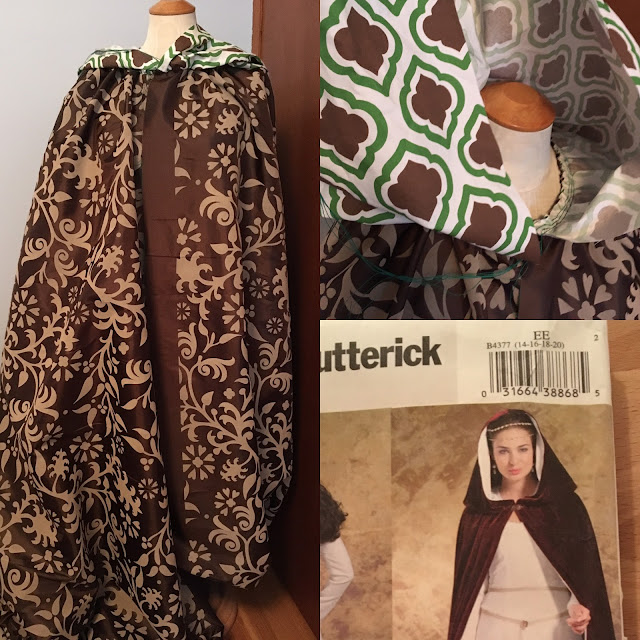This summer Vogue Patterns released
Vogue 1691 an easy to wear pullover dress. I was smitten with this style but unwilling to pick up the pattern with vintage Vogue 1606 sitting in my collection. The similarities between these two patterns would make adding Vogue 1691 redundant.
There are some differences between these patterns besides the twenty-five year age difference. Vogue 1691 has princess seams, a rounded neckline and a longer length. Whereas, vintage Vogue1606 has side slits, square neckline and mid-knee length.
The only thing I like that the current Vogue 1691 has over the vintage Vogue 1606 was the length. And with Vogue 1691 as my inspiration, that is how this dress came to be. I started with adding four inches to the length and borrowing the pocket pattern from Vogue 9237. I prefer the square neckline on the vintage pattern and how it's finished with the top stitched facing.
The hemline is finished with mitered corners and top-stitched in place. I really like the finishing details suggested in the vintage pattern over the bias finish suggestion of the modern one.
The fabric is a medium weight cotton that has been in the stash for decades. It came from Fanny Fabrics, a once local fabric store that has long closed down. The fabric was previously pre-treated and with a quick press, it was ready to hit the cutting table. There is enough scraps to make a couple of matching face masks to go with the dress.
Project Details
Seams: Straight stitch 2.6 length
Seam Finishes: Top-stitch with 2.8 length, pockets and side seams were finished with the serger.
Tips: Search your pattern stash for some vintage finds, sometimes with some minor tweaks and length adjustments you can recreate the latest pattern releases.
Fabric: 3 metres
Interfacing: 0.4 metres
Pattern: Vintage Vogue 1606
Additional Tools & Supplies: Flip chart paper, pencil, straight edge ruler, curve ruler, cutting table, pins, pin cushions, tailor's chalk, measuring tape, measuring gauge, iron, ironing board, sewing machine, walking foot, serger, threads, tweezers, thread clippers, scissors, hand sewing needle, tailor's wax, clapper and a whole lot of distractions.
Stay Safe, Be Kind and Happy Sewing!



















